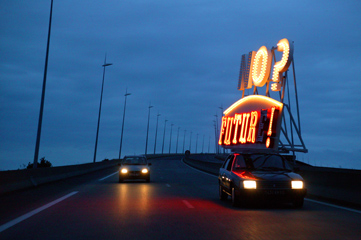
PORTUGAL EM FLAGRANTE, OPERAÇÃO 2
Portugal em Flagrante is a semi-permanent exhibition of the Calouste Gulbenkian Museum’s Modern Collection designed to offer both an introduction to the history of art and culture in Portugal during the twentieth century and a more in-depth resource for students and academics.
From 18 November, Operação 2 adds a selection of paintings to the works on paper presented by Operação 1, which opened in July of this year. In March 2017, Operação 3 will conclude this presentation of the Modern Collection with an equally important group of works that includes sculptures and installations, amongst other mediums.
Portuguese artists were always keen to travel beyond Portugal and head for major centres for art – first Paris, then London and finally Berlin and New York. They were frequently supported in this by grants from the Calouste Gulbenkian Foundation and subsequently returned to Portugal and/or developed international careers. This constant movement gave rise to notable events, experiments and works, whose internal (‘Em Casa’ [At Home]) and external (‘Lá Fora’ [Out There]) facets are evoked by a rhythmic progression of texts and images, echoing that which accompanies the exhibition on the lower floor. Operação 2 frames the museum’s collection of twentieth-and twenty-first-century painting within the broader context of this permanent migration and intersection of cultures. It is for this reason, too, that a number of foreign artists have also been included.
Portugal em Flagrante é uma exposição de caráter semipermanente da Coleção Moderna do Museu Calouste Gulbenkian que oferece uma introdução à história da arte e da cultura em Portugal no século XX, disponibilizando informação mais aprofundada para estudantes e professores.
Desde 18 de novembro, Operação 2 acrescenta uma seleção de obras de pintura à seleção de trabalhos em papel proposta por Operação 1, inaugurada em julho passado. Seis grandes momentos marcam a progressão cronológica de Operação 2: um olhar sobre as primeiras três décadas a partir da Exposição dos Independentes em 1930; diversas experiências surrealistas; a nova figuração/abstração da década de 1960; a exposição Alternativa Zero e as propostas da década de 1970; a exposição internacional Diálogo e os eufóricos anos da década de 1980; a última década do século XX e o primeiro decénio do novo milénio.
Os artistas portugueses procuraram sempre sair do país para os grandes centros – primeiro Paris, mais tarde Londres e, finalmente, Berlim e Nova Iorque –, com bolsas frequentemente atribuídas pela Fundação Calouste Gulbenkian, regressando a Portugal e/ou desenvolvendo carreiras internacionais. Operação 2 enquadra a pintura dos séculos XX e XXI da coleção no contexto alargado dessa permanente migração e interseção cultural, o que explica também a presença de alguns artistas estrangeiros.

![BIG BANG [solo show]](https://joaolouro.com/wp-content/uploads/2007/10/big-bang.jpg)

